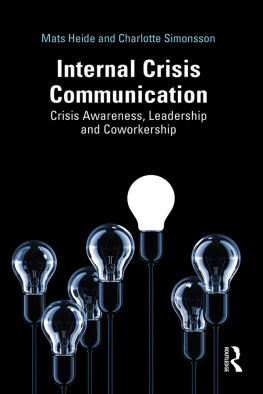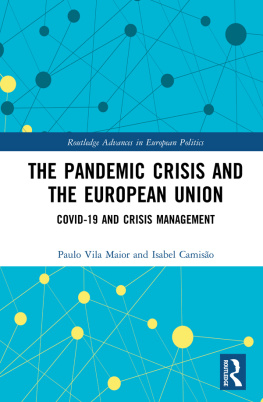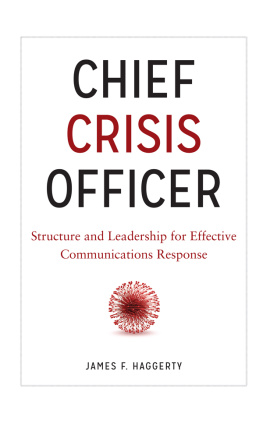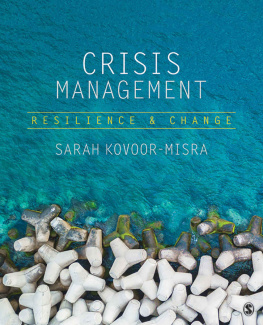Alexander, D. E. (2013). Resilience and disaster risk reduction: An etymological journey. Natural Hazards & Earth System Sciences , (11), 27072716.
Altheide, D. L., & Snow, R. P. (1979). Media logic . Beverly Hills, ca: Sage. Alvesson, M. (2004). Knowledge work and knowledge-intensive firms . Oxford: Oxford University Press.
Alvesson, M. (2013). Organisation och ledning. Ett ngot skeptiskt perspektiv . Lund: Studentlitteratur.
Alvesson, M., & Krreman, D. (2001). Odd couple: Making sense of the curious concept of knowledge management. Journal of Management Studies , (7), 9951018.
Alvesson, M., & Spicer, A. (2010). Theories of leadership. In M. Alvesson & A. Spicer (Eds.), Metaphors we lead by: Understanding leadership in the real world (pp. 830). New York, NY : Routledge.
Alvesson, M., & Spicer, A. (2011). Metaphors we lead by: Understanding leadership in the real world . New York, NY : Routledge.
Alvesson, M., & Spicer, A. (2012). A stupidity-based theory of organizations. Journal of Management Studies , (7), 11941220.
Alvesson, M., & Sveningsson, S. (2015). Changing organizational culture: Cultural change work in progress (2nd ed.). London: Routledge.
Ancona, D., Malone, T. W., Orlikowski, W. J., & Senge, P. M. (2007). In praise of the incomplete [leadership]. Harvard Business Review , (2), 92100.
Andersen, P. A., & Spitzberg, B. H. (2009). Myths and maxims of risk and crisis communication. In R. L. Heath & H. D. OHair (Eds.), Handbook of risk and crisis communication (pp. 205226). New York, NY : Routledge.
Ansell, C., Boin, A., & Keller, A. (2010). Managing transboundary crises: Identifying the building blocks of an effective response system. Journal of Contingencies & Crisis Management , (4), 195207.
Argyris, C. (1977). Double loop learning in organizations. Harvard Business Review , (5), 115125.
Argyris, C. (1994). Good communication that blocks learning. Harvard Business Review , (3), 7485.
Argyris, C., & Schn, D. A. (1978). Organizational learning . Reading, MA : Addison-Wesley.
Ashcraft, K. L., & Trethewey, A. (2004). Developing tension: An agenda for applied research on the organization of irrationality. Journal of Applied Communication Research , (2), 171181.
Balogun, J., Best, K., & L, J. (2015). Selling the object of strategy: How frontline workers realize strategy through their daily work. Organization Studies , (10), 12851313.
Balogun, J., & Johnson, G. (2004). Organizational restructuring and middle manager sensemaking. Academy of Management Journal , (4), 523549.
Baran, B. E., & Scott, C. W. (2010). Organizing ambiguity: A grounded theory of leadership and sensemaking within dangerous contexts. Military Psychology , , 4269.
Barthol, R. P., & Ku, N. D. (1959). Regression under stress to first learned behavior. Journal of Abnormal Psychology , (1), 134136.
Barton, M. A., Sutcliffe, K. M., Vogus, T. J., & DeWitt, T. (2015). Performing under uncertainty: Contextualized engagement in wildland firefighting. Journal of Contingencies and Crisis Management , (2), 7483.
Bateson, G. (1972). Steps to an ecology of mind . Chicago, IL : The University of Chicago Press.
Bechler, C. (2004). Reframing the organizational exigency: Taking a new approach in crisis research. In D. P. Millar & R. L. Heath (Eds.), Responding to crisis: A rhetorical approach to crisis communication (pp. 6374). London: Lawrence Erlbaum Associates.
Beck, U. (1992). Risk society: Towards a new modernity . London: Sage.
Benoit, W. L. (1997). Image repair discourse and crisis communication. Public Relations Review , (2), 177186.
Berger, P. L., & Luckmann, T. (1966). The social construction of reality: A treatise in the sociology of knowledge . New York, NY : Doubleday.
Berlin, J., & Kastberg, G. (2011). Styrning av hlsooch sjukvrd . Malm: Liber.
Bisel, R. S., & Arterburn, E. N. (2012). Making sense of organizational members silence: A sensemaking-resource model. Communication Research Reports , (3), 217226.
Boholm, ., & Corvellec, H. (2011). A relational theory of risk. Journal of Risk Research , (2), 175190.
Boin, A., Kuipers, S., & Overdijk, W. (2013). Leadership in times of crisis: A framework for assessment. International Review of Public Administration , (1), 7991.
Boin, A., McConnell, A., & t Hart, P. (2008). Governing after crisis: The politics of investigation, accountability and learning . Cambridge: Cambridge University Press.
Boin, A., t Hart, P., Stern, E. K., & Sundelius, B. (2005). The politics of crisis management: Public leadership under pressure . Cambridge: Cambridge University Press.
Boje, D. M. (1994). Organizational storytelling: The struggles of pre-modern, modern and postmodern organizational learning discourses. Management Learning , (3), 433461.
Bozeman, B. (2011). Toward a theory of organizational implosion. American Review of Public Administration , (2), 119140.
Breit, E. (2014). Remedy through paradox? Constructions of internal legitimacy in a publicly discredited organization. Management Communication Quarterly , (4), 585608.
Brown, A. D., & Starkey, K. (2000). Organizational identity and learning: A psychodynamic perspective. The Academy of Management Review , (1), 102120.
Brown, J. S., & Duguid, P. (1991). Organizational learning and communities-of-practice: Toward a unified view of working, learning, and innovation. Organization Science , (1), 4057.
Brown, S. L., & Eisenhardt, K. M. (1997). The art of continuous change: Linking complexity theory and time-paced evolution in relentlessly shifting organizations. Administrative Science Quarterly , (1), 134.
Bruner, J. S. (1983). In search of mind: Essays in autobiography . New York, NY : Harper & Row.
Bruner, J. S. (1990). Acts of meaning . Cambridge, MA : Harvard University Press.
Brunsson, N. (1982). The irrationality of action and action rationality: Decisions, ideologies and organizational actions. The Journal of Management Studies , (1), 2945.
Burris, E. R. (2012). The risks and rewards of speaking up: Managerial responses to employee voice. Academy of Management Journal , (4), 851875.
Carey, J. (2009). Communication as culture: Essays on media and society . New York, NY : Routledge.
Carroll, J. S. (2015). Making sense of ambiguity through dialogue and collaborative action. Journal of Contingencies and Crisis Management , (2), 5965.
Cheney, G., Christensen, L. T., Zorn, T. E., & Ganesh, S. (Eds.). (2011). Organizational communication in an age of globalization: Issues, reflections, practices (2nd ed.). Long Grove, IL : Waveland Press.
Christianson, M. K., Farkas, M. T., Sutcliffe, K. M., & Weick, K. E. (2009). Learning through rare events: Significant interruptions at the Baltimore & Ohio Railroad Museum. Organization Science , (5), 846860.
Christianson, M. K., Sutcliffe, K. M., Miller, M. A., & Iwashyna, T. J. (2011). Becoming a high reliability organization. Critical Care , (6), 15.
Clarke, L. (1999). Mission improbable: Using fantasy documents to tame disaster . Chicago, IL : The University of Chicago Press.
Collinson, D. (2006). Rethinking followership: A post-structuralist analysis of follower identities. The Leadership Quarterly , , 179189.
Coombs, W. T. (2006). Crisis management: A communicative approach. In C. H. Botan & V. Hazleton (Eds.), Public relations theory II (pp. 171197). Mahwah, NJ : Lawrence Erlbaum Associates.
Coombs, W. T. (2007). Attribution theory as a guide for post-crisis communication research. Public Relations Review , , 135139.
Coombs, W. T. (2010). Crisis communication and its allied fields. In W. T. Coombs & S. J. Holladay (Eds.), The handbook of crisis communication (pp. 5464). Malden, MA : Blackwell Publishing.











